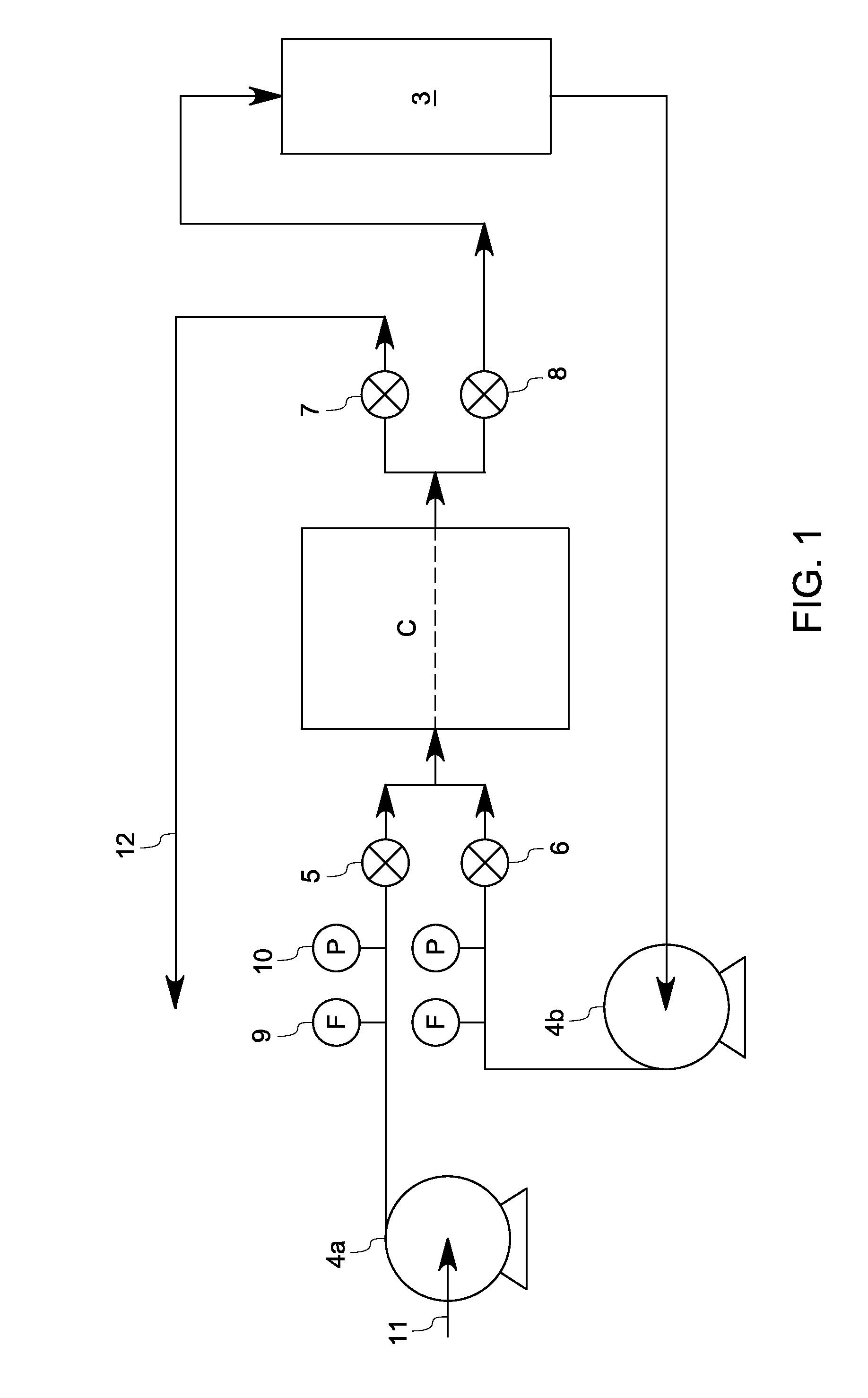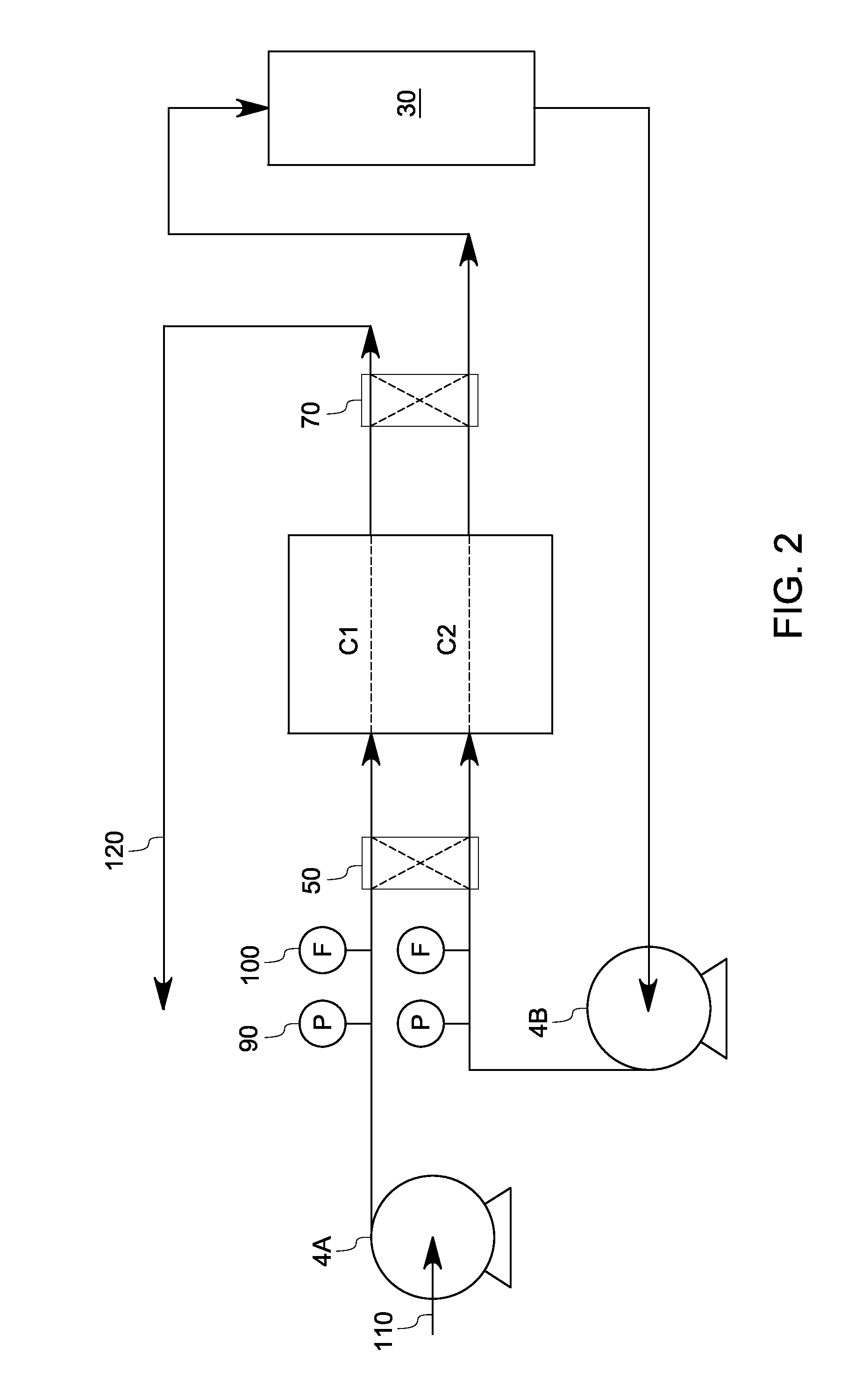Method for removing ionic species from desalination unit
- Summary
- Abstract
- Description
- Claims
- Application Information
AI Technical Summary
Benefits of technology
Problems solved by technology
Method used
Image
Examples
example 1
[0059]FIG. 1 shows a schematic flow diagram of example 1. The desalination unit was a 5-cell supercapacitor desalination (SCD) stack. The effective area of each electrode of the cells was 400 cm2 while the thickness of the spacer between the electrodes was 0.76 mm. Five hundred cycles were run in the test and each cycle included a charge step and a discharge step. Each charge step lasted for 15 minutes and each discharge step lasted for 30 minutes.
[0060]During the charge step, the SCD stack was charged at a constant current of 1000 mA. The voltage of the stack was observed to increase from about 2 V at the beginning of the charge step to about 5V at the end of the charge step. The synthetic feedwater with the composition shown in Table 1 was used as the feed water in the feed stream 11 and was pumped into a flow channel C of the supercapacitor desalination stack by a pump 4a through a solenoid valve 5 while a solenoid valve 6 remained closed. In the charge step, the feed stream 11 w...
example 2
[0068]This experiment was conducted similarly to Example 1 except that the fluid flow rate during both the charge mode and the discharge mode was changed to be 1500 ml / min, or 25.7 cm / sec linear velocity through the channels in the stack. Precipitated material was kept in the cylinder and was removed after the 500-cycle test was completed. It was found that the supersaturation degree of CaSO4 in the wash stream entering the SCD stack during the second mode of operation was in the range of 1.24 to 1.51, with an average value of 1.38.
[0069]After the test, no scaling was found on any of the 5 cells of the SCD stack.
example 3
[0070]Five 5-cell stacks were operated in series, using the same general procedure as in Examples 1 and 2. While operating the system in the first mode (charge), the synthetic wastewater was fed to the first stack, and the recovery stream was removed from the last stack. While operating the system in the second mode (discharge), the effluent from the last stack was sent to the precipitation unit, and the liquid from the precipitation unit was fed to the first stack. Here, the flow rate during both operating modes was held at 500 mL / min, which gave a linear velocity through the channels in the stack of 8.6 cm / sec. It was found that the supersaturation degree of CaSO4 in the wash stream entering the SCD stack during the second mode of operation was in the range of 1.7 to 2.0. After the system was run for 500 cycles, the stack was disassembled and was found to have very slight scaling on only two out of the 25 cells. It is believed that with minor equipment modifications, the system co...
PUM
 Login to View More
Login to View More Abstract
Description
Claims
Application Information
 Login to View More
Login to View More - R&D Engineer
- R&D Manager
- IP Professional
- Industry Leading Data Capabilities
- Powerful AI technology
- Patent DNA Extraction
Browse by: Latest US Patents, China's latest patents, Technical Efficacy Thesaurus, Application Domain, Technology Topic, Popular Technical Reports.
© 2024 PatSnap. All rights reserved.Legal|Privacy policy|Modern Slavery Act Transparency Statement|Sitemap|About US| Contact US: help@patsnap.com










